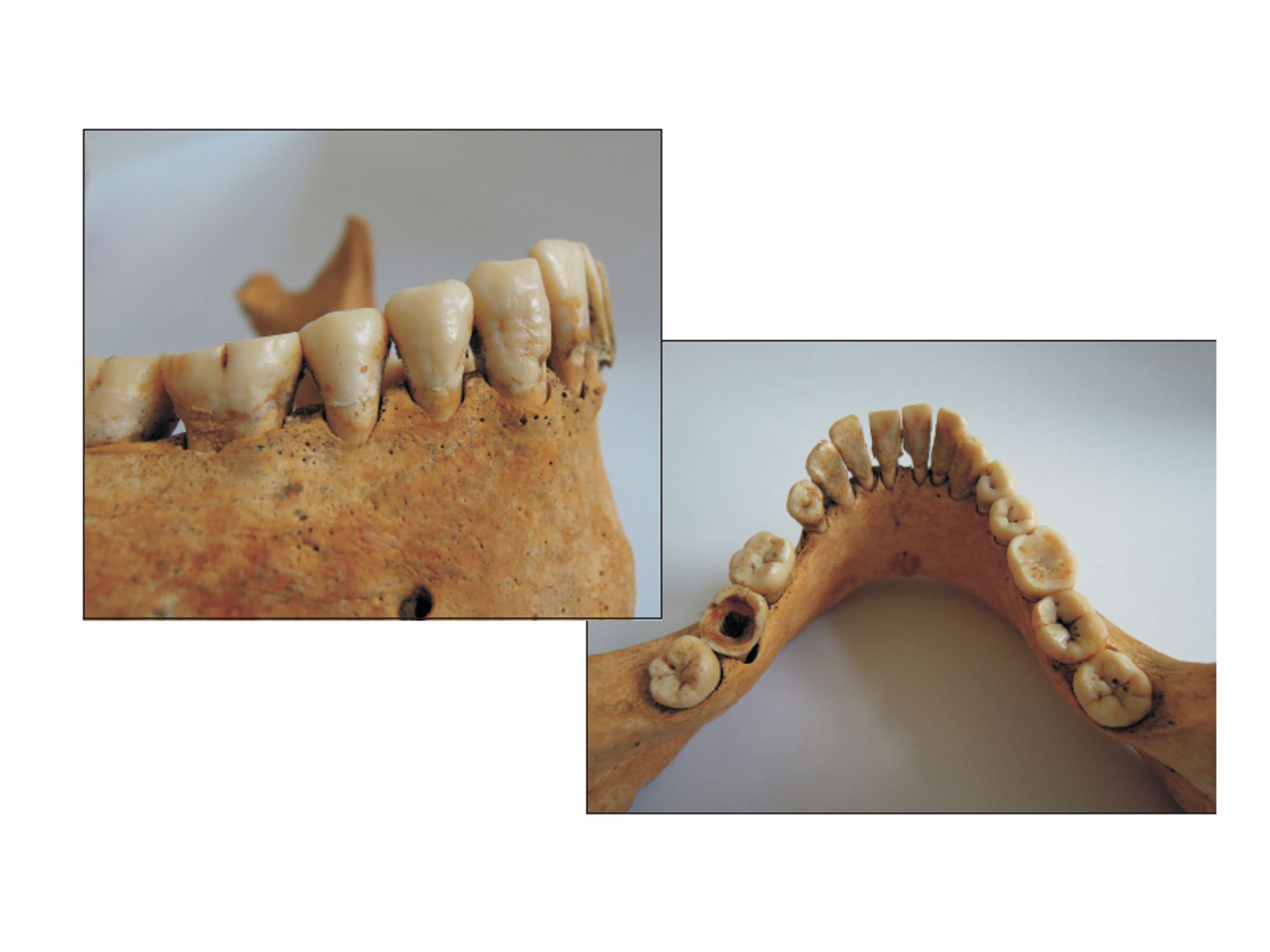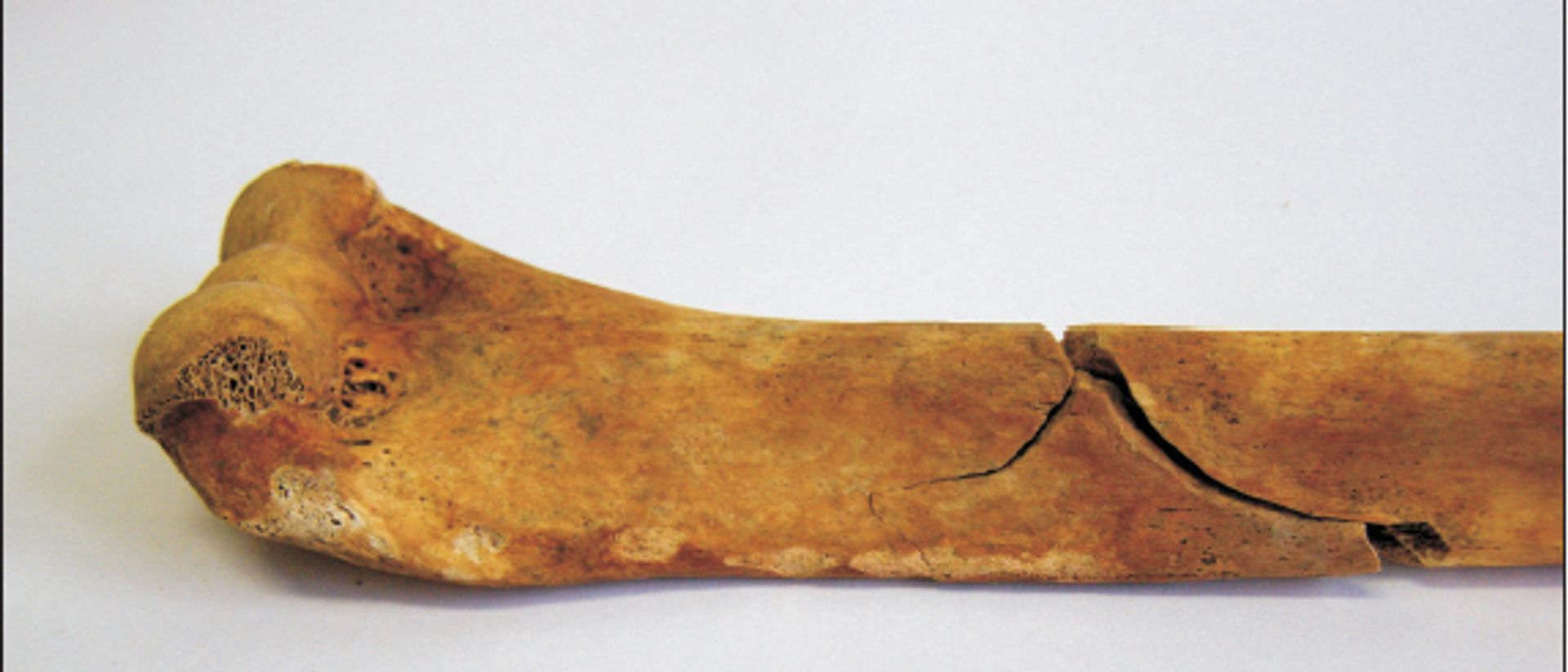Reconstruction work in the cellars of a house in the city of Brno, south-east Czech Republic, has revealed the skeletons of 12 men, thought to be soldiers who fought in the Napoleonic wars. The bodies were aged between 20 to 30 years old, and had been placed in a previously unknown mass grave. As the grave offered no clues about the individuals’ identities, or even when they were buried, a team of researchers examined the bodies to reconstruct their lives and deaths.
“The analysis of the skeletons was very complex,” says Katerina Vymazalova, an assistant professor in the department of anatomy at Masaryk University, Brno, and one of the authors of the paper. “We were able to determine the sex and approximate age at the time of death of the individuals. Paleopathological analysis revealed war wounds, including amputation of part of the femur. Using the radiocarbon method, the skeletons were dated to the early 19th century.”

Dental caries on the teeth of one of the soldiers revealed elements of gunpowder that may have been left by the men opening gunpowder bags with their teeth. Photo by Jana Vachova
One of the men had a fractured left arm, likely the result of a gunshot, while another had his left thigh amputated by a handsaw, the blade marks still visible under magnification, according to the team report published in the journal Archaeological and Anthropological Sciences. The men’s backs and legs bore signs of intense physical stress, perhaps caused by carrying heavy military equipment over long marches, and the tartar on their teeth revealed traces of nitrogen and sulphur, elements of gunpowder, probably left by the men opening gunpowder bags with their teeth—a common practice in the Napoleonic era. DNA analysis showed that the men came from different parts of Europe.

Comminuted fracture of the soldier's left arm. Photo by Jana Vachova
“All of these aspects suggest that they were soldiers at the Battle of the Three Emperors, which took place in nearby Austerlitz (Slavkov u Brna) on 2 December 1805,” Vymazalova says. “[The previously unknown Napoleonic era mass grave] is a relatively rare discovery,” she adds. “Paradoxically, so far only graves with a small number of individuals have been discovered, although it is known that up to 20,000 soldiers were killed near Austerlitz.”
The Battle of the Three Emperors was fought between the army of Napoleon and the armies of the Russians and Austrians. Many of the wounded were taken 20km north-west from the battlefield to Brno, but with the city’s hospitals overcrowded, temporary field hospitals were established, including one close to the newly discovered mass grave.
“This research justifies the depositing of the skeletal remains removed from the mass grave [...] to a more dignified site—in the Peace Mound built on the Austerlitz battlefield,” the team writes in the research paper. The Peace Mound is a memorial where the bodies of soldiers from the Battle of the Three Emperors lie interred.


